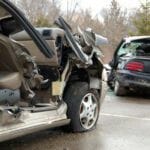What Are the Real Reasons for Motor Vehicle Crashes?
June 18, 2018 / Vehicle Accidents
Sometimes, establishing the reasons for a car crash is complicated. One factor that can make determinations even more imprecise is that state crash report forms used at the scene often lack the appropriate fields or places to enter codes that would explain the precise reason for the collision. Because each state uses its own form, no consistency exists. Compiling accurate national statistics becomes difficult, producing results that are just plain wrong.
The problem is known as incomplete crash data, and it’s hindering efforts to save lives.
How Do Accurate Crash Explanations Help Save Lives?
With 40,000 people dying on our roads each year, and another 4.6 million suffering serious injuries, any reasonable action we can take to save lives seems like a good idea. The National Safety Council (NSC) undertook a study to find out more about incomplete crash reports and how they hamper efforts to reduce motor vehicle fatalities.
From a NHTSA study conducted between 2005 and 2007, we know that 94 percent of crashes in that study were caused by driver error. Other studies consistently peg the number at 90 percent or above. But the many varieties of driver error are not reflected on many state forms. When reports don’t contain the exact reasons for crashes by recording which type of driver error was involved, or if the real reason for a crash is omitted, it becomes harder to justify policies, regulations, and laws. Resources to fight problems will not be correctly allocated, reducing the effectiveness of any efforts to save lives.
Thus, the more we know about the precise nature of the mistakes that drivers make, the more effectively we can fight against these mistakes.
An Example of an Accurate Reason
Let’s take the example of someone running a red light and causing a crash. Running the red light could be considered the “reason” the crash happened. But it’s not the true reason. Suppose that the driver looked away because they were reaching for a cell phone buzzing on the passenger seat. Even if it is legal to use a handheld cell phone while driving, as it is in Indiana, the reason should still be recorded on the state crash form. Cell phone distraction was the actual cause of the collision, and we, as a nation, need to construct an accurate picture of how big the cell phone distraction problem really is.
Specific Fields Needed on Crash Forms
The NSC reviewed forms from all 50 states and Washington, D.C., to determine whether certain factors were addressed on the forms. They discovered that:
- No state records the level of driver fatigue (by asking questions about how much sleep the driver has had in the previous 24 hours, etc.).
- 32 states lack report fields to record hands-free cell phone use.
- 32 states lack report fields to record the specific types of drug use when drug tests are positive.
- 26 states lack report fields to record texting as a factor.
- No state records the use of ADAS (advanced driver assistance systems).
- 47 states lack report fields to record the use of infotainment systems.
- 35 states lack report fields to record any restrictions if a teen was driving.
All of these factors, according to the NSC, need to be logged for a more accurate picture of why the death toll on our roads keeps rising.
How Did Indiana Fare?
The fields or codes available on the Indiana crash report forms are:
- A recording of all BrAC (breath alcohol concentration) and BAC (blood alcohol concentration) readings
- Whether or not the driver appears drowsy or was sleeping at the time of the crash
- Whether the driver is operating with a learner’s permit
- Whether any cell phone usage appears evident
- Whether any other distractions appear evident, such as passengers, reaching for items, etc.
- The posted speed limit where the crash occurred.
Suggested by the NSC but not appearing on the Indiana crash report are such factors as the results of drug tests, how much sleep the driver had had in the previous 24 hours, whether it looked as if cell phone texting or talking had been occurring before the crash, and the estimated speed the vehicle was traveling at the time of the crash. Clearly, there is room for improvement. We hope that the NSC’s study will lead to the needed enhancements in crash reporting.
When others breach their duty, we keep ours.
Wrongful death and personal injury claims can be costly to pursue, and many law firms are not in a position to effectively reach a resolution in these cases. You can be assured that our investigative team at Stephenson Rife goes to work immediately to uncover the ‘who,’ ‘what,’ ‘when,’ ‘where,’ ‘why’ and ‘how’ of a case. We are committed to bringing together the most qualified experts available to uncover what happened in your Indiana vehicular accident case.
Both Mike Stephenson, with his more than three decades of experience, and Brady Rife, with his diverse experience in personal injury litigation, will commit the highest standards of client care to your case. We offer free consultations and would like to discuss how we can be of service to you. Call us today, or use our confidential online contact form.

 Mike Stephenson has 40 years of experience and is a trusted advisor to many individuals and companies. His current practice is dominated by civil litigation in state and federal courts. He focuses much of his time on handling catastrophic injuries caused by all types of accidents, including motor vehicle, trucking, workplace injuries, product liability, and fire, just to name a few. He also works extensively in construction accidents. [
Mike Stephenson has 40 years of experience and is a trusted advisor to many individuals and companies. His current practice is dominated by civil litigation in state and federal courts. He focuses much of his time on handling catastrophic injuries caused by all types of accidents, including motor vehicle, trucking, workplace injuries, product liability, and fire, just to name a few. He also works extensively in construction accidents. [ 